Description
We build this type of feeder -for use with coarse rock material. These feeders are usually installed horizontal or at a slight downward inclination. The motion is linear and is angled upwards and forwards. The linear motion is generated by two contra rotating shafts with unbalanced weights, the size of which determine the stroke. The stroke, inclination and frequency determine the capacity.
The advantages of the horizontal feeder are high capacity, the ability to remove fines and simultaneously to feed material, and the fact that impact loads from falling material are damped since the feeder is supports on springs. However, the feeder should not be completely emptied before a fresh load of material is dumped in. Another advantage is that wear on the bottom of the feeder body is low thanks to the linear motion. The Vibrating Feeder is a robustly built machine intended for the feeding of coarse material. Its range of ap- plications is similar to that of apron feeders – mainly as a feeder for primary crushers. Feeders can be sup- plied together with feed hoppers in the form of various standard feed stations. They can also be incorporated in tailor-made feeding systems where high capacities are required. In standard form, the feeder is fitted with a bar grizzly section for the removal of fine material ahead of a crusher.
Selection of Size
The selection of a suitable size of feeder is governed by the desired capacity, the lump size of the material, and the feed opening of the following crusher. Our standard feeders are listed in the table below. We can also supply other sizes for special purposes.
Operation
The feeding motion is generated by a vibrator mechanism which gives a linear, upwardly inclined stroke. The vibrator is driven by an electric motor. The feeder can also be equipped with a hydraulic drive system or a speed variator, thus permitting stepless feed regulation.
Installation
The feeder is supported by springs attached to a mounting frame. The springs are fitted in cassettes which permit easy spring replacement in the event of a breakage.
Design
Feeder body of very robust construction. It is built up of plate and steel profiles, lined with replaceable wearing plates. The standard feeder has an inclined grizzly bar section at the discharge end to permit the separation of undersize material. The grizzly bars have replaceable wearing elements and can be supplied for different separation sizes. The feeder is also available with two grizzly sections in a stepped configuration and can be fitted with a second deck for the removal of natural
fines. In addition, the feeder can be supplied with a plain bottom-i.e. without a grizzly section.
Vibrator mechanism
Built into the feeder body – with two unbalanced shafts running in spherical roller bearings mounted on the sides of the body. The shafts are synchronized by a free-standing gearbox and rotate in opposite directions. The feeder’s stroke is altered by increasing or decreasing the number of unbalance weights on the vibrator shaft bearings whilst the synchronizing gears run in an oilbath.
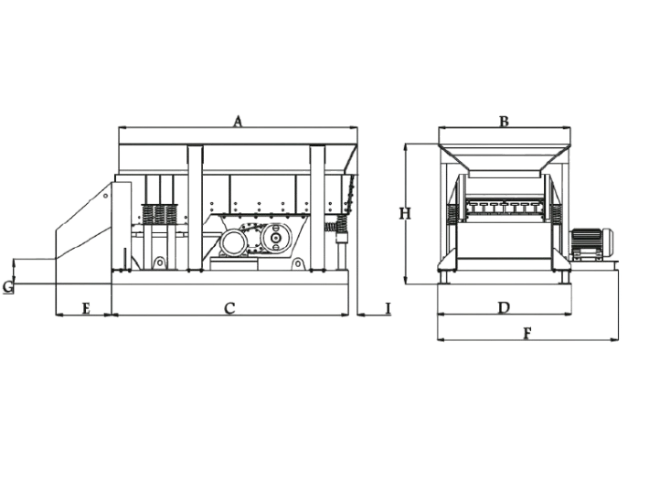
| TYPE | SINGLE DECK-300×100 | SINGLE DECK-300×120 | DOUBLE DECK-400×120 |
|---|---|---|---|
| Power Approx (hp) | 15 | 15 | 20 |
| rpm | 1440 | 1440 | 1440 |
| Weight Approx (kg) | 3500 | 3750 | 7250 |
| Capacity (T/h) | 150-200 | 180-250 | 200-300 |
| A | 3000 | 3000 | 3200 |
| B | 1700 | 1900 | 1900 |
| C | 3000 | 3000 | 3900 |
| D | 1700 | 1900 | 1900- |
| E | 720 | 720 | 830 |
| F | 2100 | 2300 | 2300 |
| G | 300 | 300 | 300 |
| H | 1780 | 1780 | 2320 |
| I | 50 | 50 | 500 |
Technical data are approximates and should be used as guide only.Capacity and power requirements depend on the type and characteristic of the feed meterial

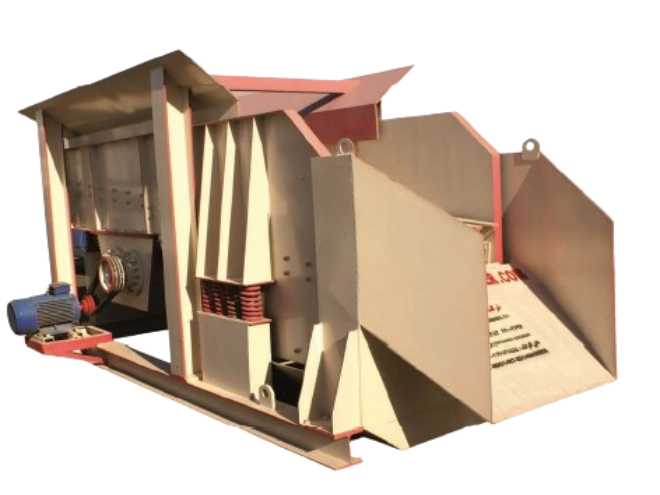
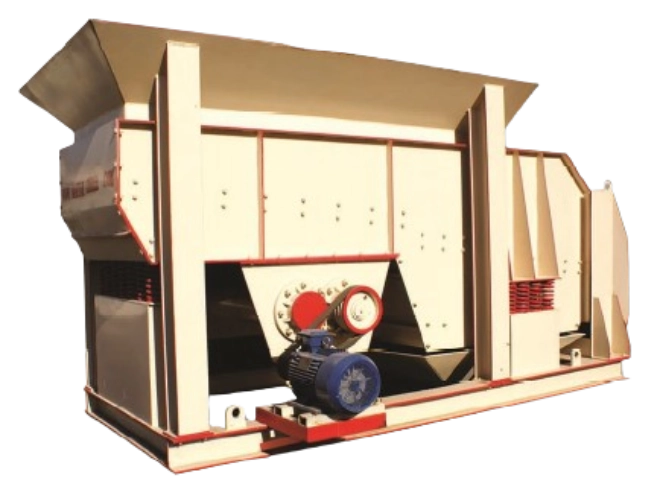
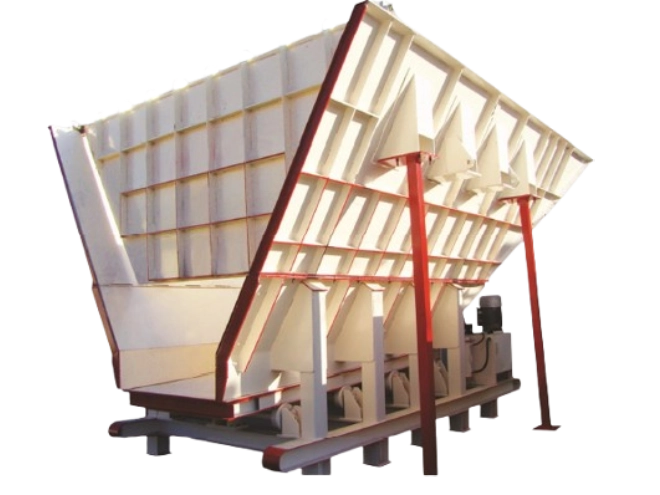
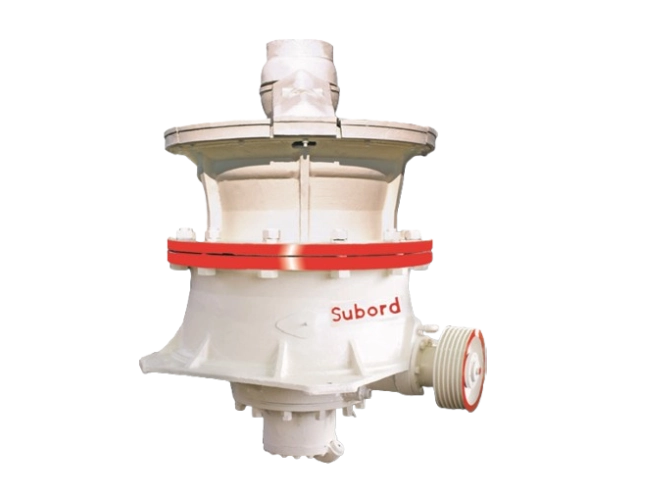
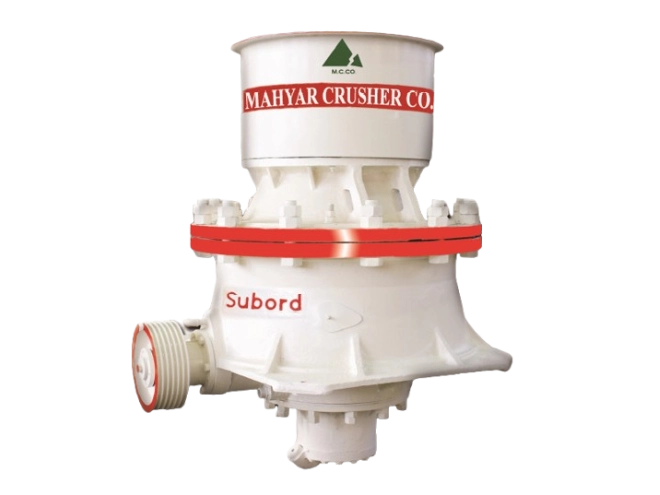
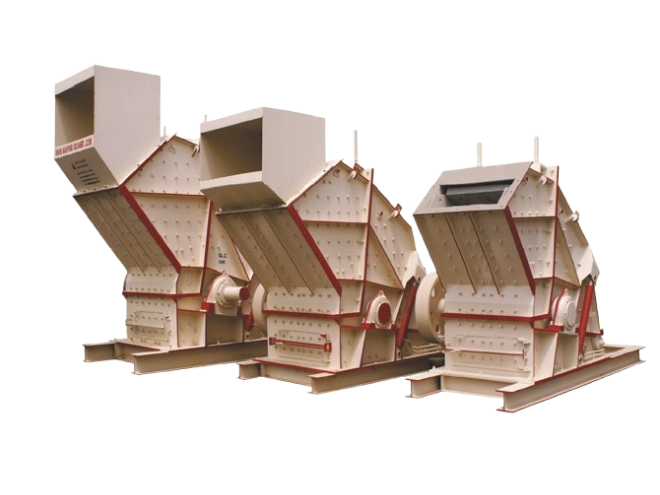
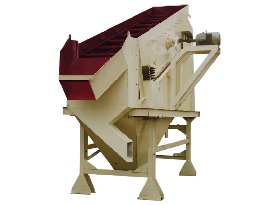
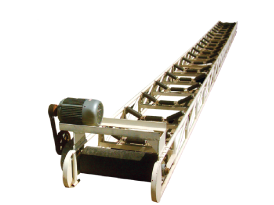

Reviews
There are no reviews yet.